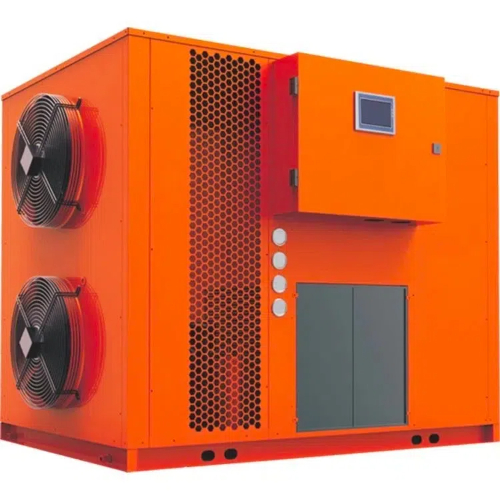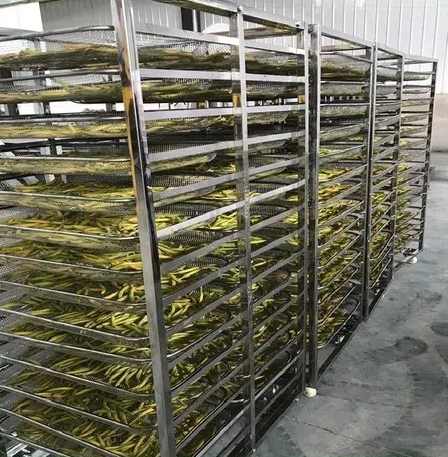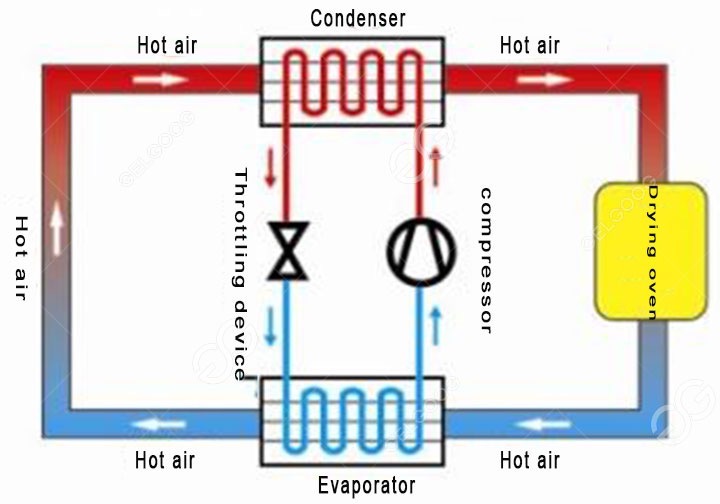
Content Menu
● Understanding Heat Pump Dryers
● Energy Efficiency of Heat Pump Dryers
● The Trade-off: Longer Drying Times
>> Factors Influencing Drying Time
● Environmental Impact
>> Sustainable Practices
● Cost Considerations
>> Comparing Costs
● Conclusion
● Frequently Asked Questions
>> 1. What is the main advantage of a heat pump dryer?
>> 2. Do heat pump dryers take longer to dry clothes?
>> 3. Are heat pump dryers more expensive?
>> 4. Can heat pump dryers be installed anywhere?
>> 5. How do heat pump dryers impact the environment?
In recent years, heat pump dryers have gained popularity as an energy-efficient alternative to traditional dryers. While they may take longer to dry clothes, their energy-saving capabilities make them an attractive option for many households. This article explores the workings of heat pump dryers, their benefits, and whether their energy efficiency justifies the longer drying times.

Understanding Heat Pump Dryers
Heat pump dryers operate using a closed-loop system that recycles hot air. Unlike conventional dryers that vent hot air outside, heat pump dryers use a heat exchanger to extract moisture from the air. The process involves several key components:
1. Evaporator: This component absorbs moisture from the air inside the dryer.
2. Compressor: The compressor increases the temperature of the refrigerant, which is then sent to the condenser.
3. Condenser: Here, the hot refrigerant releases its heat to the air, drying the clothes while the moisture is collected and drained away.
4. Fan: A fan circulates the air within the dryer, ensuring even drying.
Energy Efficiency of Heat Pump Dryers
One of the most significant advantages of heat pump dryers is their energy efficiency. They consume approximately 50% less energy than traditional vented dryers. This efficiency is primarily due to their ability to recycle hot air, which reduces the amount of energy needed to heat new air for drying.
While heat pump dryers may take longer to dry clothes—typically an additional 30 to 60 minutes compared to conventional dryers—the energy savings can be substantial. For households that do a lot of laundry, this can translate into significant savings on electricity bills over time.

The Trade-off: Longer Drying Times
The longer drying times associated with heat pump dryers can be a drawback for some users. However, it's essential to consider the context in which these dryers are used. For instance, if a household has a high laundry volume, the energy savings can outweigh the inconvenience of longer drying times. Additionally, many heat pump dryers come with various settings that allow users to optimize drying times based on the fabric type and load size.
Factors Influencing Drying Time
Several factors can influence the drying time of heat pump dryers:
1. Load Size: Larger loads will naturally take longer to dry. It's often more efficient to dry smaller loads to achieve optimal results.
2. Fabric Type: Heavier fabrics, such as towels and blankets, will require more time to dry compared to lighter materials like t-shirts and linens.
3. Moisture Content: The initial moisture content of the clothes can also affect drying time. Clothes that are spun at a higher speed in the washing machine will have less moisture and will dry faster.
Environmental Impact
Using a heat pump dryer not only benefits the household budget but also has a positive impact on the environment. By consuming less energy, these dryers contribute to lower carbon emissions. For environmentally conscious consumers, this aspect can be a significant factor in their purchasing decision.
Sustainable Practices
In addition to using energy-efficient appliances, there are other sustainable practices that can enhance the environmental benefits of laundry routines:
1. Air Drying: Whenever possible, air drying clothes can significantly reduce energy consumption. This method is particularly effective for delicate items that may be damaged in a dryer.
2. Full Loads: Running full loads instead of multiple smaller loads maximizes energy efficiency and reduces the overall number of cycles needed.
3. Regular Maintenance: Keeping the dryer clean and well-maintained ensures it operates at peak efficiency, further reducing energy usage.
Cost Considerations
While heat pump dryers typically have a higher upfront cost compared to traditional dryers, the long-term savings on energy bills can make them a worthwhile investment. Over the lifespan of the appliance, the savings can accumulate, making heat pump dryers a financially smart choice for many households.
Comparing Costs
When considering the cost of a heat pump dryer, it's essential to factor in:
1. Initial Purchase Price: Heat pump dryers can range from $800 to $2,500, depending on the brand and features.
2. Energy Savings: On average, households can save between $100 to $200 annually on energy bills with a heat pump dryer.
3. Longevity: Heat pump dryers often have a longer lifespan than traditional dryers, which can offset the initial investment.
Conclusion
In conclusion, the energy efficiency of heat pump dryers is indeed worth the longer drying time for many users. They offer significant savings on energy bills, reduce environmental impact, and provide gentle care for fabrics. As technology continues to advance, heat pump dryers are likely to become even more efficient, making them an increasingly attractive option for consumers.

Frequently Asked Questions
1. What is the main advantage of a heat pump dryer?
The main advantage is its energy efficiency, using about 50% less energy than traditional dryers.
2. Do heat pump dryers take longer to dry clothes?
Yes, they typically take longer, but the energy savings can make up for the extra time.
3. Are heat pump dryers more expensive?
They usually have a higher upfront cost, but they can save money on energy bills over time.
4. Can heat pump dryers be installed anywhere?
Yes, they do not require external venting, allowing for flexible installation options.
5. How do heat pump dryers impact the environment?
They reduce energy consumption, leading to lower carbon emissions and a smaller environmental footprint.












